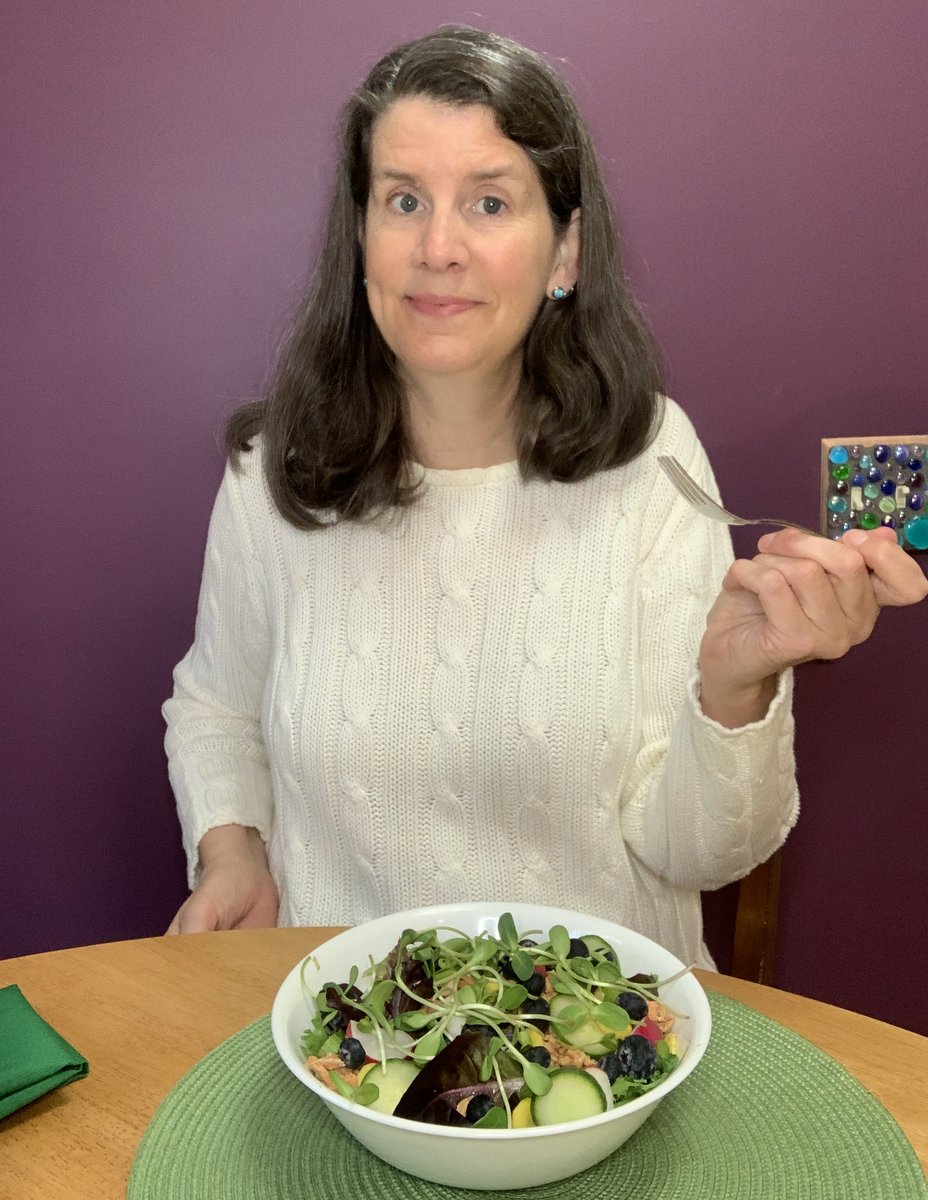
“What most people don’t realize is that food is not just calories, it’s information. It contains messages that communicate to every cell in the body.”
~ Dr. Mark Hyman
My Diet Before Rheumatoid Arthritis
I developed rheumatoid arthritis (RA) in 2012, and at the time I was the ultimate omnivore, blending healthy and unhealthy foods into my American diet. What did that look like? I shopped at the health food store, buying quality meat and organic vegetables and cooked a lot of homemade meals. At the same time, I started my day with Diet Coke and had a huge sweet tooth. A day didn’t go by where I didn’t have gluten, dairy, and sugar. And when it came to the sugar, I wasn’t picky. I would make delicious, organic, homemade cookies on the weekends, but I would also eat Twinkies if I had a craving.
Overall, I was proud of the way I ate. As a child I was a picky eater who avoided all vegetables and wouldn’t try anything new. As an adult, my palate expanded greatly. I grew to love vegetables and frequently tried new recipes, but my inner child’s sweet tooth remained. I was a big believer in “all things in moderation.” I felt bad for my gluten-free friends and was grateful I wasn’t one of them. I also loved being an easy dinner guest and would eat anything from hot dogs to tofu burgers.
As I approached age 40, I started gaining weight and didn’t want to give up my vices. So, I started calorie counting and gave up dietary fats instead. Fat is high calorie, and by cutting fat at mealtimes, I could transfer those calories to cookies and candy instead. That right there is the problem with calorie counting. It treats all food as equal with no consideration for nutrition. What I didn’t realize is that by skipping fats at meal times, I wasn’t able to absorb any of the fat-soluble vitamins in those healthy foods I was preparing. I also didn’t know that fat is a building block for every cell in my body and essential to health. As more of my calories shifted to sugar, my gut health suffered as well. The year before RA appeared, I experienced intermittent, severe, digestive pain with no known cause. I was thin, but I wasn’t healthy and my body was starting to show it.
Experimental Diets After Rheumatoid Arthritis
My first RA symptoms appeared in January 2012, and I was disabled by June. The doctors called it rapid and severe onset. I went from being someone who hiked for fun on the weekends and worked full-time as a massage therapist, to someone who limped crossing her living room who didn’t have the strength in her hands to wash dishes. I was living with a level of pain so high that it resembled nothing I had every experienced before. I cried every day and honestly didn’t know if I could survive it. The only silver lining was that I was motivated to try anything to make that pain diminish. Dietary changes that seemed impossible before, now felt easy compared to the life I was living.
Because vegetarianism and veganism have better PR campaigns than other healing diets, those are the ones I believed were healthy, so they were the first ones I tried. Unfortunately, they weren’t helpful for me. Instead, my inflammation continued to skyrocket.
Next, I shifted to a gluten-free, whole foods diet, eliminating wheat, sugar and processed foods. This dramatically reduced my pain for about a week giving me hope, but unfortunately the results were temporary. The pain quickly returned and started escalating again.
Next, I tried a rotation diet. The theory is that if you don’t repeat a food within a 4 day cycle, the body can’t develop an inflammatory response to it. That way, if you’re sensitive to many foods, you can eliminate the problem by rotating what you eat. This type of diet is a lot of work because leftovers aren’t an option, but I was willing to do it if it worked. Unfortunately, it didn’t. My flares continued.
Finally, a friend told me about the GAPS diet, which has a lot of similarity to paleo. Her mother had tried GAPS for inflammatory bowel disease (IBD) and found it very helpful. Since IBD is an autoimmune disease too, I figured that was worth a try. Within one week, I started to feel improvements and they lasted. For the first time I felt like my body had hit a turning point. The inflammation that had been rising for 6 months started decreasing instead. I went from excruciatingly painful daily flares to having moderate flares a few times per month. I went from intense daily pain to mild daily pain. As my pain improved, my sleep improved, and so did my energy levels. I went from being disabled in many ways to regaining function again. I was still quite weak and exercise often caused flares, but life was markedly better. Unfortunately, after 5 months, my improvements plateaued.
My Experience With the Paleo Autoimmune Protocol (AIP)
Honestly, I had hoped I wouldn’t have to do the AIP. It looked intimidatingly hard! But while GAPS definitely led to improvements, I was still experiencing a lot of autoimmune activity. If the AIP could help, I was ready to give it a try. The elimination phase wasn’t easy for me. I did it 100% – no cheats – but I felt like the fun had been sucked out of my kitchen. This was early 2013. There were no AIP cookbooks and very few recipes online. I had more than one temper tantrum in the kitchen. However, I also saw huge benefits that made it worthwhile. After 6 weeks in the elimination phase, my flares stopped altogether, my daily pain dropped to a whisper, and my strength increased enough to enjoy exercise again.
Now that I was feeling better, I was ready to start reintroductions, and I took it slowly. It was a science experiment with me at the center, and I wanted accurate results. Over the next few months, I learned that nightshades and dairy were my biggest food triggers, whereas eggs and homemade chocolates I could enjoy every day. I also learned that nuts and seeds were fine in moderation, but if I had them every day, inflammation would return. It was so empowering to get this knowledge! Over the next few years, I developed many delicious recipes within my personalized healing diet. Joy returned to my kitchen and my life.
From Calorie Counting to Nutrient Density
I mentioned above that my diet before RA was focused on calories, not nutrition. I stopped calorie counting the minute I got rheumatoid arthritis, and my focus has been on health ever since. I no longer focus on weight.
Both the GAPS diet and the Paleo Autoimmune Protocol are founded on deep nutrition. That might surprise people who have only heard of the foods eliminated on these diets. While it’s true these diets help people identify foods that might be causing digestive distress and inflammation, they also emphasize the importance of adding nutrient-dense foods in their place. Our bodies need deep nutrition to thrive. So, I now add healthy fats to every meal. I also learned to love some new foods. I had never eaten organ meat before, but once I learned they are superfoods unlike any other, I developed recipes to make them delicious. I also started eating seafood. I mentioned that before RA, I would eat almost anything. Seafood was one category on my “no” list. I simply didn’t like the flavor. But once I learned of the value of omega-3 fatty acids and their role in reducing inflammation, I set myself the challenge to change my taste buds. And guess what? I succeeded! I did it in baby steps. I started with milder white fish in soups that hid their flavor, and when I learned to like that, I expanded to include salmon which has a stronger flavor, and eventually even found a way to like sardines!
This focus on nutrient density is a cornerstone of my diet today. I also want to give a shoutout to Dr. Terry Wahls who created The Wahls Protocol. She is largely responsible for the nutrient-dense focus of the AIP as we know it today.
Medication Expanded My Food Tolerance
Like many people, I had hoped to avoid immunosuppressant medication, and for a while I achieved that. However, while diet and lifestyle changes reduced my pain, they didn’t cure my disease. When my hormones started fluctuating during perimenopause, my autoimmune activity increased and I started experiencing permanent joint damage. I made the difficult decision to start medication, and just like my dietary changes, it ended up being an excellent decision for my health. It allowed me to reach remission for the first time.
The truth is, I feared the side effects of medication without considering the potential benefits, and one unexpected benefit for me was expanded food tolerance. Inflammation and autoimmune activity cause leaky gut which in turn, increases our reactivity to foods. This causes more inflammation and autoimmune activity, creating a vicious cycle. When medication successfully lowers inflammation and autoimmune activity, it can interrupt that cycle, allowing the gut lining to heal and food tolerance to expand. This is what happened for me.
Once I was in remission, I started experimenting with foods that I couldn’t eat before, and discovered I could now eat them in moderation: dairy, nightshades, legumes, gluten-free grains. Suddenly, restaurant meals became possible! I had largely avoided restaurants during my first 4 years on a healing diet, because I couldn’t control what happened in the kitchen and they often resulted in an autoimmune flare. Not anymore. Medication gave me food freedom, and I’m very grateful.
Food Freedom vs. Slippery Slope
While food freedom is a wonderful thing, it’s not a free pass altogether – at least not for me. I understand the temptation of leaving a healing diet behind if you reach remission, but I was honestly never tempted to do that. I’ve learned a lot about the power of food as medicine and what my body needs to thrive. My body may not react to foods as strongly as it did pre-medication, but that doesn’t mean I can ignore my nutrition needs altogether. I’ve been on medication many years now and had long periods of remission and also experienced autoimmune flares. My medication works best when I consciously choose a healthy diet and lifestyle. For me, it’s not an either/or choice. It’s the combination that works. However, food freedom means I have some wiggle room, and I’m so grateful. I think it’s an important part of making a healing diet sustainable.
The challenge with food freedom is when it becomes a slippery slope. Food isn’t just nutrition. It’s a mental and emotional experience as well. There are foods we turn to for comfort in times of stress, and they’re not usually in the health food aisle. This is true for me too. I crave sugar under stress, and since sugar is often addictive, the more I eat it, the more I want it. If I do this every day, it does increase my inflammation. It also changes my gut health, sleep quality, and mood.
So, how do I find that balance? It’s a lifelong experiment, and it’s not always easy. I tend to use my food freedom the most when I’m on vacation. The ability to eat a wider variety of foods allows me to take trips I couldn’t take otherwise. When I get back home, I return to my personalized healing diet, but full disclosure – it takes effort to transition back. In my regular daily life, most of my meals are homemade, but I do meet friends at restaurants once or twice a month, and I’ll occasionally pick up takeout when I don’t want to cook. I love having these options! When it comes to sugar, moderation is key for me.
Menopause Changed My Body Again
I was 43 years old when I developed rheumatoid arthritis, and I’m 53 now. They call menopause “The Change” for a reason. For anyone facing this transition right now, I have a podcast episode that can help. For me, menopause changed my mental health, my food tolerance, my stress tolerance, and my autoimmune activity. I went out of remission and needed a multi-pronged approach to regain balance again.
What are my body’s new dietary needs? Prior to menopause I could enjoy the occasional glass of wine without negative consequences. Now, I can’t. My body has a lower capacity to detoxify alcohol. I feel hungover after one glass, and the next day I experience mood swings and blood sugar swings. It’s interesting that this doesn’t happen while I’m drinking alcohol. It’s an after-effect, showing that it shifts the whole balance of my body in a negative direction, even after just one glass of wine. It’s no longer worth it to me, so I gave it up altogether.
I’m also more sensitive to caffeine. It can now trigger anxiety where it didn’t in the past, but it’s largely dependent on my stress levels. When I’m feeling relaxed, I can enjoy caffeine with no issues. If I’m under a lot of stress, I need to avoid it altogether. And on days in the middle, there’s one type of caffeine that works for me: Green Sunrise Tea from Mountain Rose Herbs. It’s a blend of green tea, lemon, ginger, and chamomile, and the chamomile blocks the anxiety effect as long as my stress levels aren’t too high.
Lastly, I’m more sensitive to sugar and have new autoimmune symptoms when I consume it. Rheumatoid arthritis has always affected my joints. Post-menopause, it now also affects my skin. Bumps and nodules can develop on my fingers. This is correlated with severe rheumatoid arthritis, so it’s not something I want to ignore. It’s my body’s first sign of inflammation and sugar is the biggest trigger. If I avoid sugar, they rarely appear. If I consume sugar, the bumps appear immediately, and if I continue consuming sugar, they spread across my hands and stay there until I give up sugar again. Interestingly, it’s only store-bought treats that have this effect, and to be clear I’m not talking about things like Twinkies. I’m talking about high-quality paleo cookies and dairy-free caramels. Their ingredient lists are short, but they contain a lot of natural sugar, and my body still sees them as inflammatory. This is a bittersweet development for me (no pun intended). I love food freedom! Who doesn’t? But I know this symptom is also a gift. I have a sweet tooth, and it’s easy for it to get out of control. These bumps are painful, and they keep that craving in check. If I ignore my skin symptoms, joint pain will follow. Thankfully, there is one treat my body likes that doesn’t lead to skin symptoms: my homemade chocolates. They have just 5 ingredients: cocoa, coconut oil, honey, vanilla, and sea salt (and it’s a small amount of honey). My body tolerates those well, even if I eat them daily.
How Stress Impacts My Food Tolerance
Like many people with autoimmune disease, I’ve experiences stress-induced autoimmune flares. Post-menopause, I’m more sensitive to stress than ever. Thankfully, I have a decade of stress management experience now and lots of mind-body techniques in my toolbox. I know what it feels like when my nervous system is ramping up and I can often intervene before it reaches an inflammatory level. What does this have to do with diet? I’ve learned that stress impacts my food tolerance as well.
I described leaky gut above and how it connects to autoimmune disease and food reactivity. Stress increases leaky gut, and relaxation soothes it. Relaxation also supports healthy digestion in another way: our parasympathetic nervous system is activated when we relax, which is called the “rest and digest” system. Just taking a few deep breaths before mealtime can make a big difference. I’ve also recently started meditating after dinner. It’s my time to relax before my last hour of work, and it optimizes my digestion at the same time.
One last note: stress management and mind-body techniques also help me with dietary choices. Instead of being driven by unconscious cravings and impulses, I’ve learned how to notice those impulses and pause before making a choice. Sometimes I’ll follow the craving anyway, even if it’s inflammatory. That’s part of being human. But other times, if it’s a stress response, I may choose a healthier way to soothe that stress.
Perfectionism and Healing Diets
Many of us approach healing diets very intensely in the beginning. I was “perfect” in my dietary choices for the first 2 years. I think my hope was that if I did everything perfectly, I would cure the incurable. Not only was that an impossible goal, that’s a lot of pressure. In fact, research shows this type of perfectionism worsens health outcomes. That’s not surprising since stress increases inflammation and decreases food tolerance.
So, now I’m a recovering perfectionist. I’ve learned self-compassion, which is a gentler way to treat myself. I don’t have to be perfect to be worthy. 10 years after my diagnosis, I’ve found my wiggle room in my food choices and the mindset I need to make my healing diet sustainable.
My Personalized Healing Diet Now: Listening to My Body
- My biggest lesson: One thing I’ve learned over the past 10 years is that life changes and my body changes, which means my diet will change. The most important thing is that I listen to my body, and The Paleo Autoimmune Protocol taught me how to do that. The elimination phase lowered my inflammation enough to give me a clear baseline, and the reintroduction process done slowly and carefully allowed my body to communicate clearly the foods it did and didn’t like. I’ve tested reintroductions of different foods many times since then, learning which ones I can enjoy daily, which are fine in moderation, and which are inflammatory and best limited or avoided.
- The goal of my diet today: I wonder if “diet” is the right word. It’s not a set of rules that others have set for me, and my goal isn’t weight loss. Instead, it’s the food choices I make on a daily basis that help me live well with autoimmune disease. It’s one of the many ways I try to love myself and my body.
- My personal “no” list: I’ve never reintroduced gluten and I don’t intend to. It turns out I have one of the genes associated with celiac disease, and I never got the antibody test before going gluten-free. In order to test it, I would have to do a gluten challenge, and since gluten can cause immune system reactions across many autoimmune diagnoses including RA, it’s not something I’m willing to risk. The other foods on my “no” list are artificial foods. I haven’t had a Diet Coke or Twinkies in 10 years, and I don’t miss them. Those are my “never eat” foods, and I realize that’s a small list compared to the AIP. This doesn’t mean I eat a Standard American Diet otherwise. At home, I eat mostly paleo with a focus on nutrient density, but when I travel I expand my food choices.
- My vacation diet: In addition to avoiding gluten and artificial foods, I also limit dairy. But other than that, I allow myself a lot of food freedom on vacation. I still primarily seek whole foods, but I will also include some gluten-free indulgences. What might this look like? I took a once-in-a-lifetime trip to swim with whales in the Dominican Republic. The chef on the boat catered to food restrictions, but wouldn’t have been able to accommodate something as strict as the AIP. I asked for gluten-free, dairy-free instead. The meals were delicious and largely paleo to my surprise, but they generally included nightshades, legumes, and the occasional gluten-free grain. My inflammation did rise on that trip, but never got out of control, and when I returned home and returned to my personalized healing diet, I was able to rein in that inflammation again. This is what I mean by listening to my body and finding my wiggle room. If I ate this way every day at home, it would eventually lead to an autoimmune flare, but it’s absolutely fine for me to eat this way for special experiences like this. It’s what allows me to live a fuller life, and isn’t that what thriving with autoimmune disease is all about?
- Sample restaurant meals: In addition to enjoying food freedom on vacation, I also go out to dinner in my hometown once or twice a month. One of my favorite restaurant meals is Kale Salad with Grilled Salmon. The old Eileen from 10 years ago wouldn’t have eaten that, but honestly I love it now! I realize that may not sound like an indulgence, so let me give you another example that might be more surprising. My husband and I took a weekend getaway to a nearby city (we live in a rural area). There was a great restaurant that specialized in gluten-free fried chicken and waffles. I hadn’t had either of those things in 10 years, so I was very excited to try it. It was so good and my body handled it so well, that we ate there twice! That’s what food freedom looks like to me. I choose the meal that looks the most delicious within the guidelines that support my health.
- Nourishing myself during a flare: Speaking of health, my diet during an autoimmune flare looks different than my diet during remission. I think living well with autoimmune disease is equal parts empowerment and surrender. I draw a lot of empowerment from the positive impact my choices have on my health and happiness. However, I’ve also learned that sometimes flares come in spite of our best efforts, and there’s grace in surrendering to what I can’t control. My goal during a flare is to be kind to myself and provide my body with the support it needs to recover. From a food perspective, I’ll double down on nutrient density and avoid food indulgences. From a lifestyle perspective, I prioritize sleep, rest, and self-care.
- My normal diet at home: Since I cook most of my meals at home, you might wonder what those meals look like. Many of them are still AIP! That’s because I developed some favorite recipes 10 years ago that I still love today. However, I also rotate in some non-AIP foods regularly. For breakfast, soup is my favorite way to start the day. On the days I don’t have soup, I’ll usually have eggs. My body loves them and has no inflammatory response, which is great because yolks are nature’s multi-vitamin. For lunch, I often choose nutrient-dense salads, but if I’m craving a hot lunch, I’ll reheat leftovers that I set aside from the prior night’s dinner. When it comes to dinner, I rarely use packaged foods. My meals feature meat or seafood, a wide variety of veggies, healthy fats, and some herbs and spices. While I do have some favorite recipes, I try to keep myself out of food ruts by varying the recipes I choose. I’ve also reintroduced white rice and enjoy that a few times per month. For example, Sweet Coconut Shrimp Curry is an AIP recipe that is delicious by itself, but I like it even more when served over white rice. While I don’t eat nightshades at home very often, I love having cherry tomatoes and rainbow bell peppers in my salads in the summertime. 10 years ago, that would have caused a flare. Now, in moderation, they’re simply delicious! In summary, I eat very well!
- To the people who feel sorry for me: At the start of this article, I said I felt sorry for my gluten-free friends before I embarked on a healing diet myself. Now, that look of pity is sometimes directed toward me. While I do miss the convenience of my old diet, the food I eat now is simply more delicious. My husband says my meals taste better than almost any restaurant meal, and he’s not wrong. Convenience foods are generally very bland. Home cooked food almost always tastes better. If anyone feels sorry for me when they see the way I eat, they’re not paying attention.
Beyond Food: Other Parts of My Healing Lifestyle
Food is medicine, but it’s not the only medicine. Things like sleep, stress management, detoxification, healthy movement, emotional support, supplements, and medication all play a part for me. I know it can be overwhelming to consider everything that can impact autoimmune health. But it can also be empowering: there are so many places to intervene! If you aren’t ready to try a healing diet yet, choose one of the other areas and take a baby step today. No one masters every habit all at once. In fact, I think “mastery” is the wrong word. Our efforts don’t need to be perfect to have a positive impact. A healing lifestyle is simply understanding that self-care can be a powerful part of your healthcare.
You May Also Be Interested In

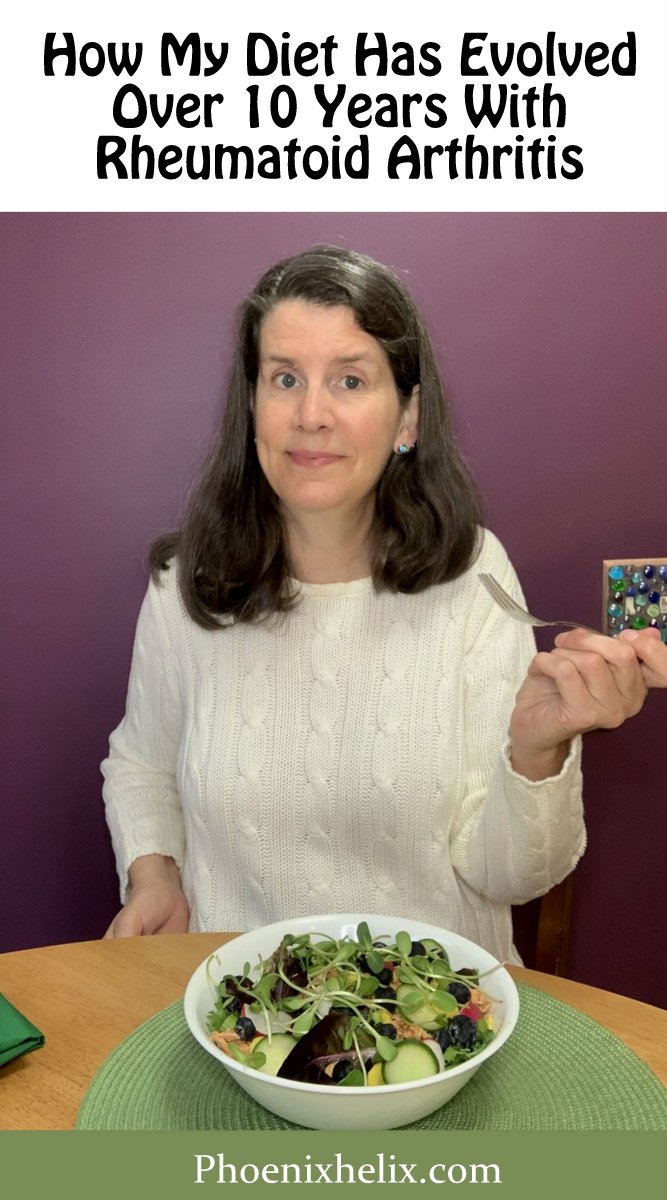
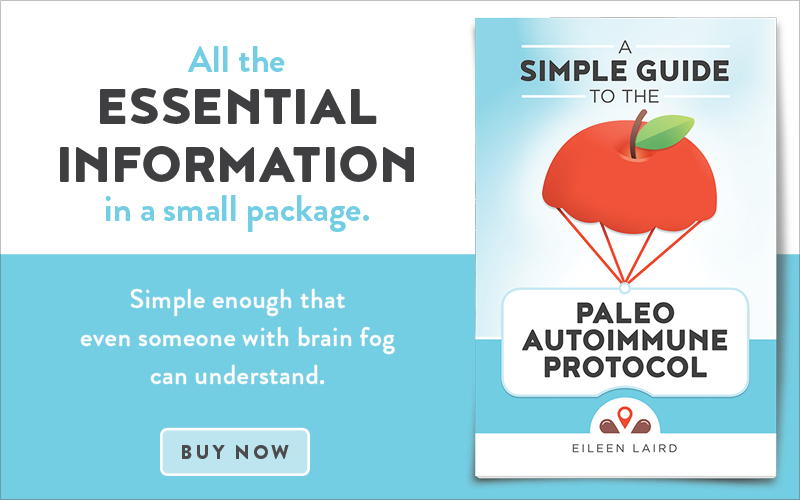
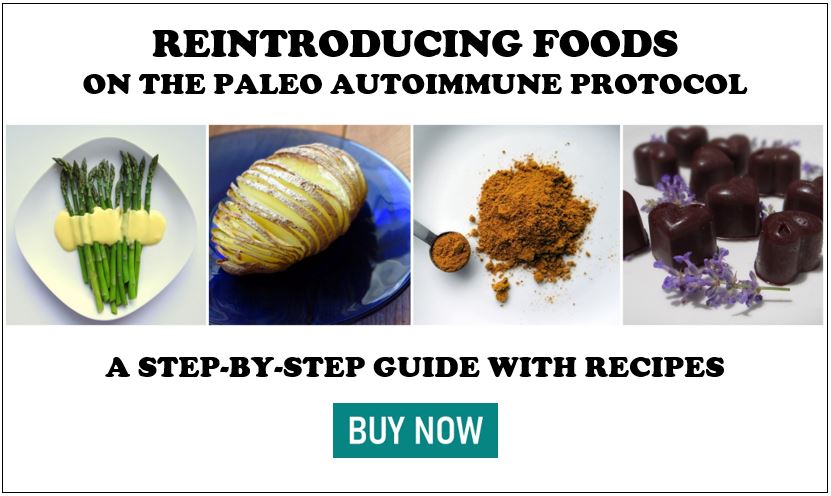
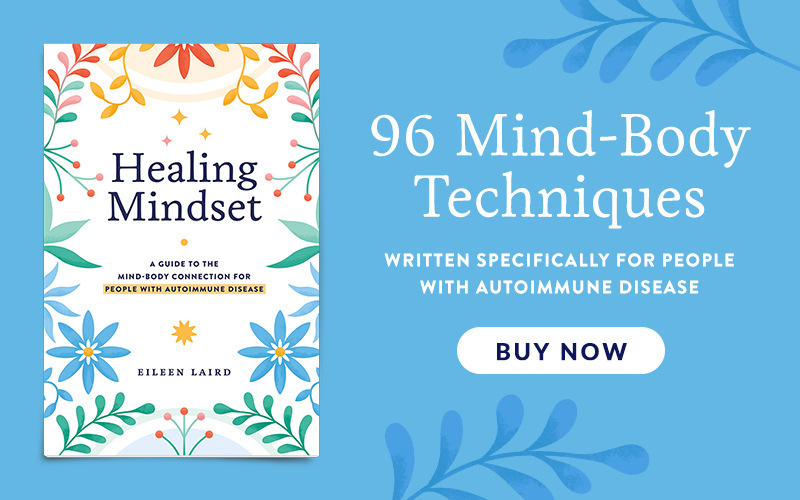

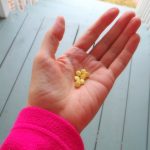

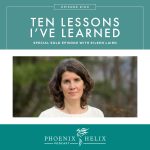
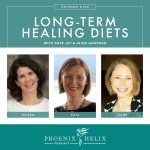
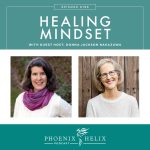

I recently discovered all your wonderful content and it is so encouraging to me! I am in Hashimoto’s flare mode right now but it is slowly getting better with AIP, hormone therapy, and prioritizing my rest (for once). Yesterday I ordered your book Healing Mindset because I realize this is a journey and I need some more tools in my backpack.
Chante, thank you so much for writing. I’m so glad you found encouragement here. That is my goal! You are taking care of yourself in beautiful ways. May your flare pass quickly, and may you be kind to yourself throughout the journey.
Thank you so much for sharing this! Knowing your journey–and how is changed over the years and why– is so very helpful and encouraging.
Kim, you’re so welcome. That’s my goal! Wishing you wellness in every way.